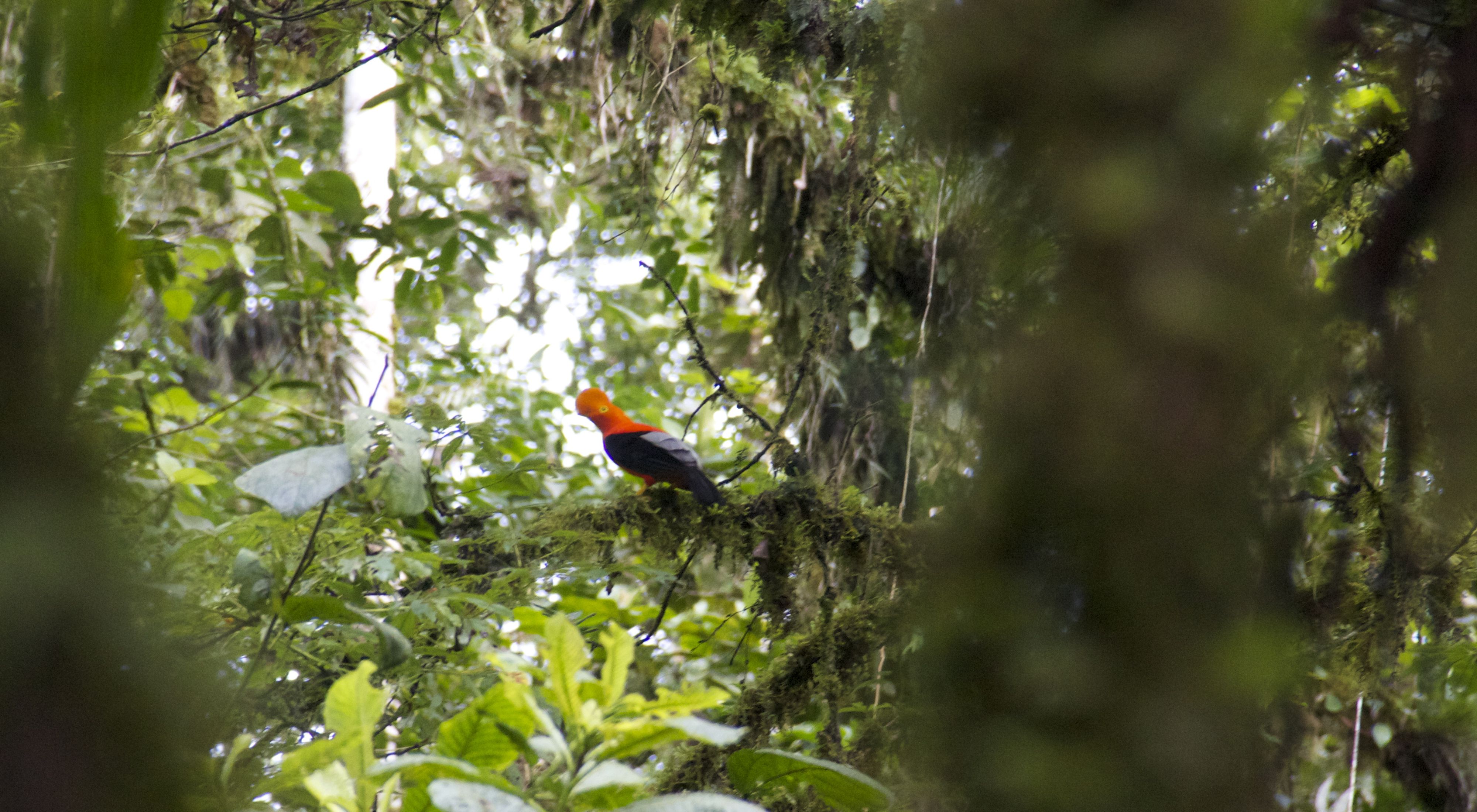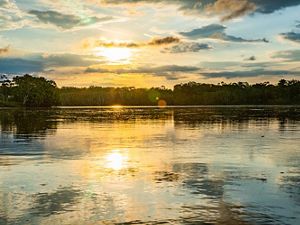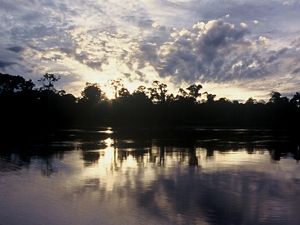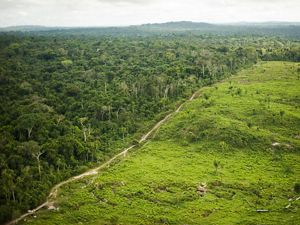The Amazon. Nearly seven million square kilometers of river basins sprawling nine South American countries: Brazil, Bolivia, Colombia, Ecuador, Guyana, Peru, Suriname, Venezuela, and French Guyana, its vast biodiversity transcending political boundaries.
According to an analysis by The Nature Conservancy (TNC), the Amazon’s rivers host at least 2,600 freshwater fish species, 1,260 of which are endemic. This means 5 percent of the world's freshwater fish rely upon the waters that flow down from the Andes to where the Amazon meets the Atlantic Ocean.
The network of rivers and waterways also sustains a forest that serves as a regional climate buffer and supplies water and rainfall to a region that represents 70 percent of South America's GDP. The Amazon—a land mass roughly the size of the continental United States that, according to WWF estimates, hosts 10 percent of the planet's biodiversity.
-
5%
Five percent of the world's freshwater fish rely upon the waters that flow down from the Andes to where the Amazon meets the Atlantic Ocean.
-
10%
The Amazon—a land mass roughly the size of the continental United States that, according to WWF estimates, hosts 10 percent of the planet's biodiversity.
-
34M
The Amazon's aquatic ecosystems supply water and food to the 34 million people who call the Amazon home, including 380 Indigenous communities.
-
40%
At least 40 percent of the Napo Basin is under the stewardship of Indigenous peoples, including the Cofán, Siona-Secoya, Waorani, Zapara and Kichwas.
A conservation imperative: Protecting one-fifth of Earth's freshwater
While protecting the Amazon’s terrestrial ecosystems is essential, so too is bolstering efforts to preserve its aquatic ecosystems, which, according to the FAO, account for 17 to 20 percent of the world's freshwater. They supply water and food to the 34 million people who call the Amazon home, including 380 Indigenous communities.
Of the world’s free-flowing longest rivers, a whopping 37 percent are located in the Amazon Basin. For this reason, this ecosystem—and especially the Napo River Basin that straddles Ecuador and Peru—is proving to be a battleground for global freshwater conservation.
"The Napo flows down from the Andes into the floodplain, shaping the main riverbed of the Amazon. It is a major link from the Andean highlands to the Amazon lowlands," explains Paulo Petry, Senior Freshwater Scientist at TNC.
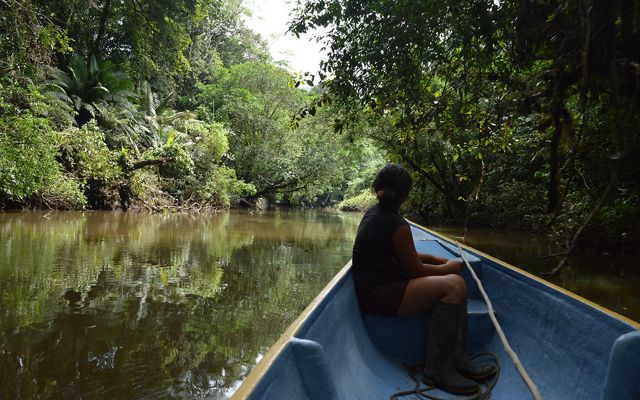
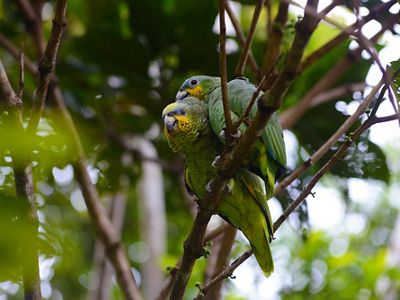
It is a complex water supply network spanning at least 47,000 kilometers—99 percent of its tributaries flow freely—and has headwaters at the Cotopaxi Volcano, and other plains, national parks, and ecological reserves in the Andes.
Originating at high altitudes, the waters of the Amazon flow through practically all temperature zones until spilling into the Atlantic. It is home to 10 percent of the world's aquatic megafauna: 22 species of dolphins, manatees, turtles, caimans, araipamas, also known as paiches, and large catfish, all key players in an ecosystem that’s vital to the livelihoods of communities along the river.
Conserving the Amazon Basin requires bringing together different countries, sectors, and stakeholders, and must take a long-term, comprehensive approach. "A lot of work has been done when it comes to the Amazon, but little on the specific water resources it contains," warns Silvia Benítez, TNC's Water Security Manager. She emphasizes the importance of implementing timely and well-coordinated interventions to protect and contribute to the wider environment.
A legacy: Preserving a way of life
At least 40 percent of the Napo Basin is under the stewardship of Indigenous peoples, including the Cofán, Siona-Secoya, Waorani, Zapara and Kichwas. They have experienced firsthand the area’s growing threats, which endanger not only the integrity of their rivers, but their very way of life.
"We never imagined that our resources were going to run dry. It is not like before. The Chingual River located further upstream flows into and pollutes our river, the Aguarico, because there are large towns with sewage systems that dump waste into the water," says Víctor Quenama, president of the Sinangoe community of the Cofán ethnic group.
Their daily interactions with the Amazonian rivers, their way of understanding the world, and their everyday subsistence are at risk, says Quenama. He knows of nearby communities, faced with the loss of their rivers, that have come to rely on rainwater.
The 48 Sinangoe families maintain this resource to protect their territory and traditional practices. "We fish as our parents taught us, with fishing nets, spears, bows, and hooks we made ourselves and in specific places. We take care of the fish so they don’t disappear. There used to be a lot of fish, but they have been dwindling. Kids don't bathe in or drink the water there either," adds Quenama.
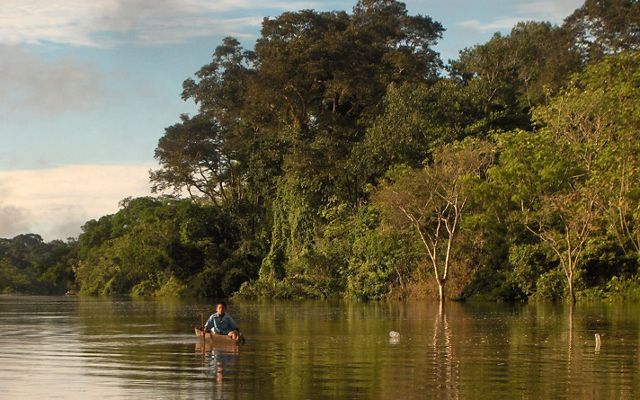
Threats to the health of the rivers in the Amazon are many. According to Petry, the Napo Basin is currently facing deforestation, extensive cattle ranching, ever-increasing agricultural encroachment, poorly planned infrastructure projects, the introduction of exotic species that threaten native species' survival, and even human waste coming down from the Andean foothills.
Indeed, studies conducted by the Universidad Ikiam, the Pontificia Universidad Católica, and the Universidad San Francisco de Quito have begun to report high concentrations of heavy metals, a potential danger to the ecosystem and human health. The Napo's proximity to the Trans-Ecuadorian Pipeline System, which ruptured last April, and the use of noxious chemicals and barbasco by the fishing sector present additional threats to the basin.
In 2017, the Sinangoe passed their own law for the protection of their ancestral territory which established a ranger force made up of members of the Indigenous community who work to monitor and fend off illegal mining, hunting, and fishing in the area.
What’s more, Quenama added, they continue to work and raise funds to educate the neighboring communities on sustainable management of these lands.

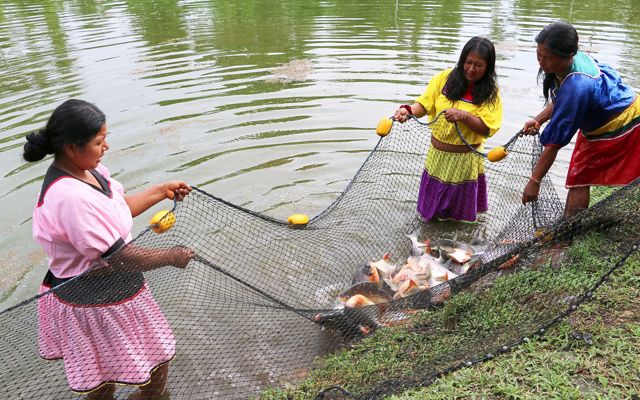
The collaboration: Supporting Indigenous leadership for a sustainable future
It is in this context that TNC initiated the Freshwater Resources Community Management Initiative in Napo. The idea is to create and launch a pilot project focused exclusively on the health of rivers and biodiversity, in partnership with the Indigenous communities that have traditionally thrived on these waters. TNC will offer both legal and educational tools to support their independent efforts.
The initiative kicked off in July 2019, using databases to identify ideal geographies for the project according to environmental factors, biodiversity characteristics, and the presence of some sense of community ownership. The Sinangoe territories and the town of Rucullacta, inhabited by Cofanes and Kichwas respectively, were ultimately selected for the pilot.
"We want to focus on working with Indigenous communities because the Napo River Basin lies in their territories,” says Benítez. “They are the ones who are there and the keenest to protect it because it is their source of food, transportation and income.”
Last September, Petry explains, "we met with the leaders of the territories for the first time. They were cautious, but welcomed us warmly and they took the proposal to their community, which was crucial as their opinion is highly regarded. Then we got to work," says the scientist.
Quote: Silvia Benítez
Indigenous communities are the keenest to protect the Napo River Basin because it is their source of food, transportation and income.
The team began by assessing the biodiversity of the rivers—first taking stock of the species most commonly used by the communities, such as caimans, shads, bocachicos, turtles, crabs and shrimp.
Then they went deeper into the ecosystem, finding aquatic macroinvertebrates, fungi, and organisms important for sustaining the ecosystem. Despite research challenges presented by COVID-19, the team has developed some promising new conservation strategies that they’re eager to test once it is safe to do so.
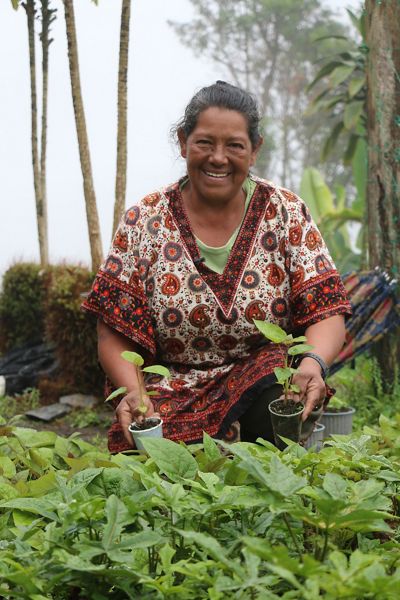
Some of these strategies include promoting the sustainable use of native species in fishing and aquaculture; strengthening territorial control and management under the Sustainable Development Goals; strengthening the legal standing of communities based on the right to prior consultation for managing mining, oil, and infrastructure; and connecting Indigenous ethnic groups with sustainable and responsible tourism activities.
TNC's interest in safeguarding South America's freshwaters through joint efforts with native peoples is not new. It emerged in the 90s and became a reality at the turn of the millennium.
The goal is to further research ways to ensure the continuity of the rivers, create protection mechanisms in partnership with communities, and recognize and protect under the law the territories as river reserves. A daunting task, the team admits, and one that cannot be tackled alone.
"The work starts with community insight and will demand collective action through alliances with universities, NGOs, and the public and private sectors,” says Benítez, who envisions similar efforts for Caquetá, Putumayo, Santiago, Marañón, and Ucayali river basins. “We want this to be a long-term project to ensure the wellbeing of communities and rivers.”
Originally published in Semana Sostenible (Spanish)
January 29, 2021
View Original
Global Insights
Check out our latest thinking and real-world solutions to some of the most complex challenges facing people and the planet today.
